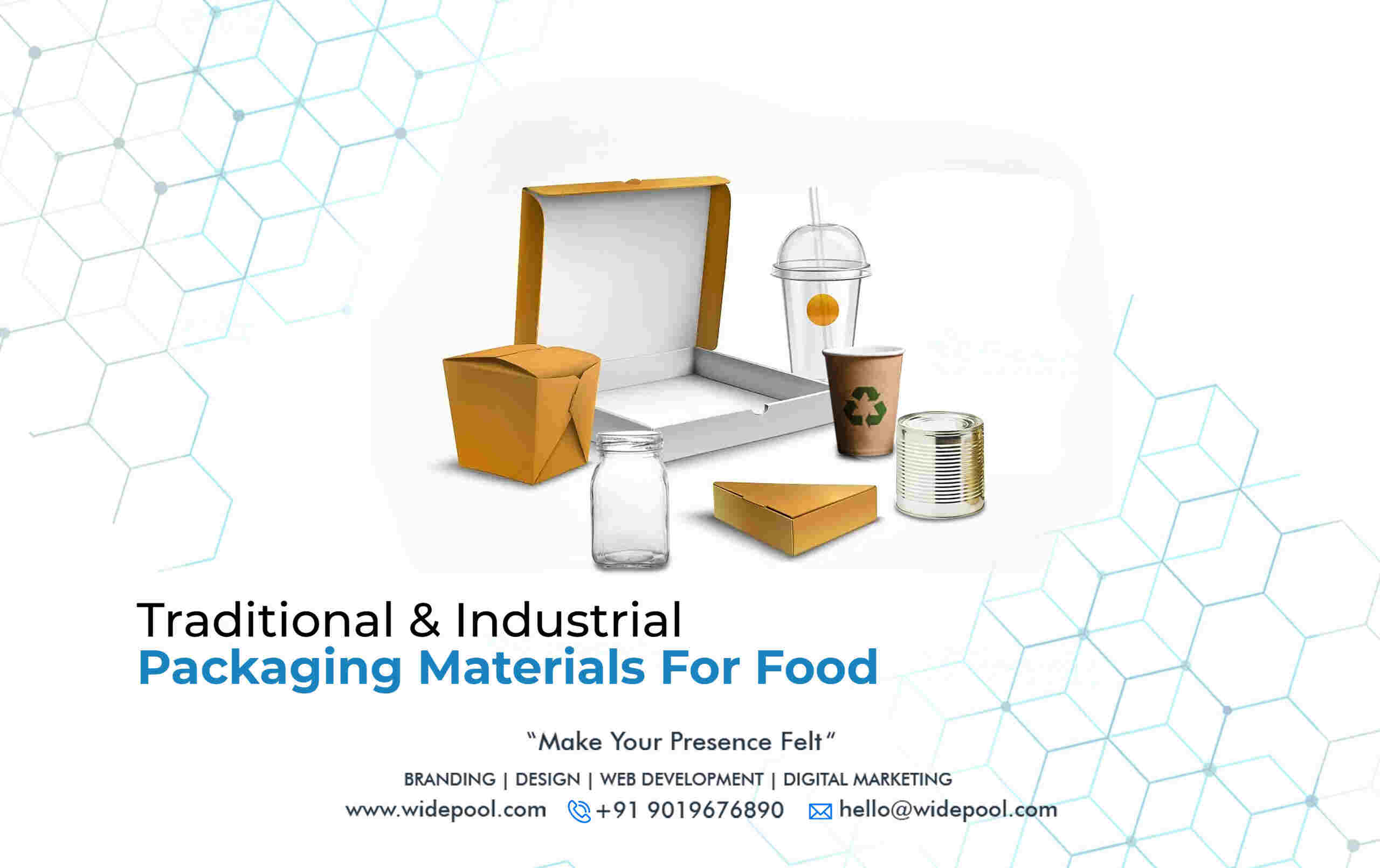Traditional Packaging Materials for Food
Industrial Packaging Materials for Food
Packaging Materials for Food
Packaging materials for food play a very crucial role in ensuring the safety, preservation, and presentation of food products. They are designed to protect food from external factors such as contamination, moisture, light, and air, while also providing convenience for consumers. There are various types of packaging materials used for food, including traditional materials & industrial materials. Here’s a breakdown of some common packaging materials used in the food industry within these categories.
Traditional Packaging Materials for Food
Glass
Glass packaging is known for its excellent barrier properties and non-reactive nature, making it suitable for a wide range of food products. It provides product visibility and is often used for jars, bottles, and containers. Glass packaging is recyclable but can be fragile & heavier, posing logistical challenges and potential safety risks. Glass containers are widely used for packaging food & beverages. They are transparent, impermeable, and can be recycled.
Paper & Cardboard
Paper & cardboard packaging are renewable & recyclable options. People commonly use them for boxes, cartons, & bags. These materials provide good strength and you can print them with branding information. However, they may have limited barrier properties against moisture & air, necessitating additional layers for certain food products. People use these materials commonly for packaging dry goods, such as cereals, snacks, and bakery products. They are lightweight, cost-effective, and recyclable.
Leaves, Vegetable Fibers, & Textiles
People use natural materials like banana leaves, corn husks, and bamboo in some cultures for packaging food. They are biodegradable and provide a traditional aesthetic. With increasing environmental concerns, there is a growing interest in biodegradable and compostable packaging materials. These materials are typically from plant-based sources, such as cornstarch, break down naturally over time. While they offer eco-friendly advantages, their barrier properties and shelf life is less compared to traditional packaging materials.
Leather
Leather has historically been the product for packaging certain food items like cheese. It provides durability and a rustic appeal.
Earthenware
Clay or ceramic containers, such as pots and jars, are in use for food packaging for centuries. They provide insulation and can enhance the shelf life of certain products.
Industrial Packaging Materials for Food
Metals
People use metal packaging, particularly aluminium, for cans, jars, and foils. It offers excellent barrier properties, protecting food from light, air, and moisture. Metal packaging is durable, stackable, and tamper resistant. It also provides a long shelf life for products. However, metal packaging can be heavier and more expensive compared to other materials. People commonly use aluminium & tin for food packaging, especially in the form of cans.
Plastic
Many people use plastic packaging due to its versatility, durability, and cost-effectiveness. Common types include polyethylene (PE), polypropylene (PP), polyethylene terephthalate (PET), and polystyrene (PS). Plastic packaging provides excellent barrier properties, can be transparent for product visibility, and is available in various forms such as bottles, containers, and films. However, concerns exist regarding the environmental impact of plastic waste.
-
- Flexible Plastic Films: Various types of plastics, such as polyethylene (PE) and polypropylene (PP), are used as flexible films for packaging food items like snacks, frozen foods, and meat. They provide barrier properties and extend shelf life.
- Plastic Containers: Various types of plastics, such as high-density polyethylene (HDPE) and polypropylene (PP), are used for packaging food items like dairy products, sauces, and condiments. They offer good barrier properties and come in different shapes and sizes.
- Polyethylene Terephthalate (PET): PET is a type of plastic commonly used for packaging beverages, condiments, and salad dressings. It is lightweight, transparent, and recyclable.
Cellulose
People use cellulose-based materials like cellophane that come from plant fibres for packaging some food products. They are transparent, moisture-resistant, and biodegradable.
Wood
People use wooden crates or pallets for bulk packaging of fruits, vegetables, and other food products. Wood provides strength & durability.
Avail of Widepool’s Services
It is highly important to note that the choice of packaging materials for food depends on factors such as the nature of the food product, desired shelf life, marketing requirements, and environmental considerations. Once you have made these considerations, you can then avail the noteworthy packaging services of Widepool.

